Abstract
A variety of in vivo and more recently in vitro assays have been described to assess cell mediated immunity (CMI). Two methods routinely employed in our laboratory to assess CMI following exposure to chemicals in rodents include delayed hypersensitivity and in vitro lymphoproliferation. Preliminary studies indicate that depressed delayed hypersensitivity responses, as performed by a radiometric assay, correlates with altered susceptibility to infectious agents and tumor cell challenge following exposure to immunotoxic chemicals. Furthermore, suppression of T-cell lymphoproliferative responses to at least 50% below control values correlated with depressed delayed hypersensitivity responses and altered host susceptibility. On the other hand, when suppression of T-cell lymphoproliferative responses are within 50% of control values, delayed hypersensitivity and host susceptibility parameters are not affected. Assuming adequate technical expertise and accurate data interpretation, CMI assays of these types can provide a valuable data base for toxicology studies and immunotoxicity assessment.
Full text
PDF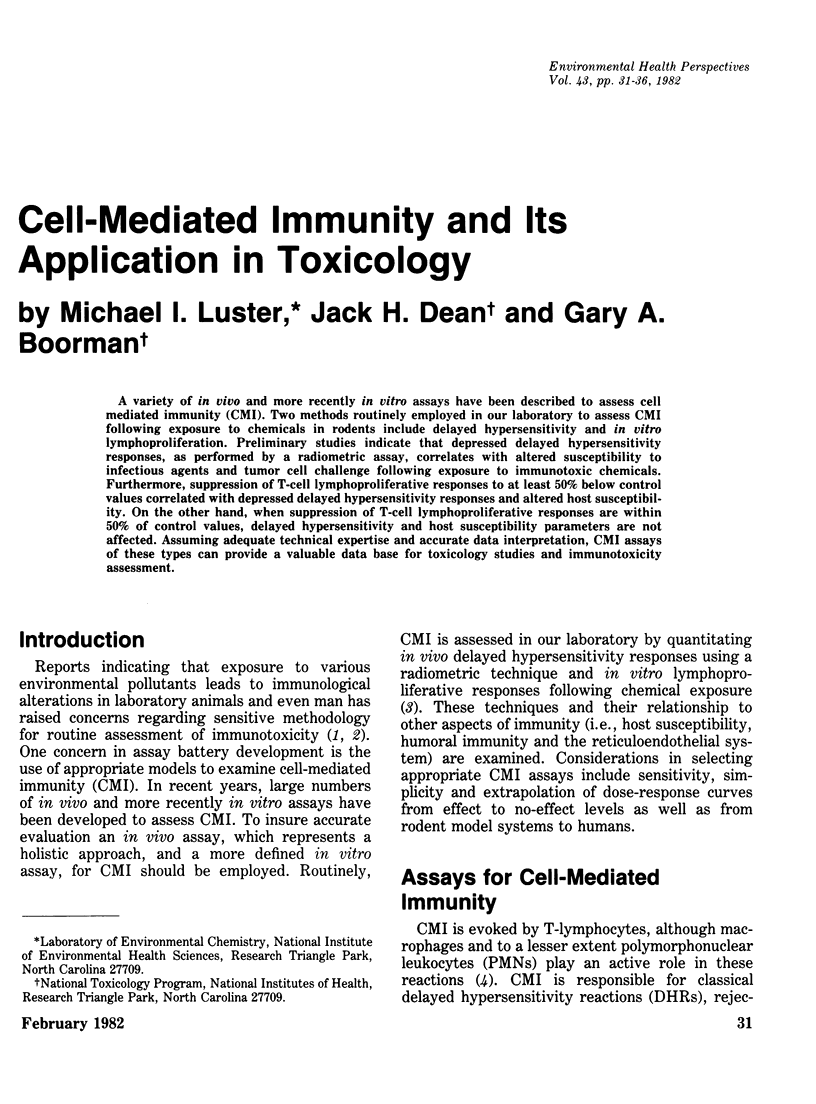
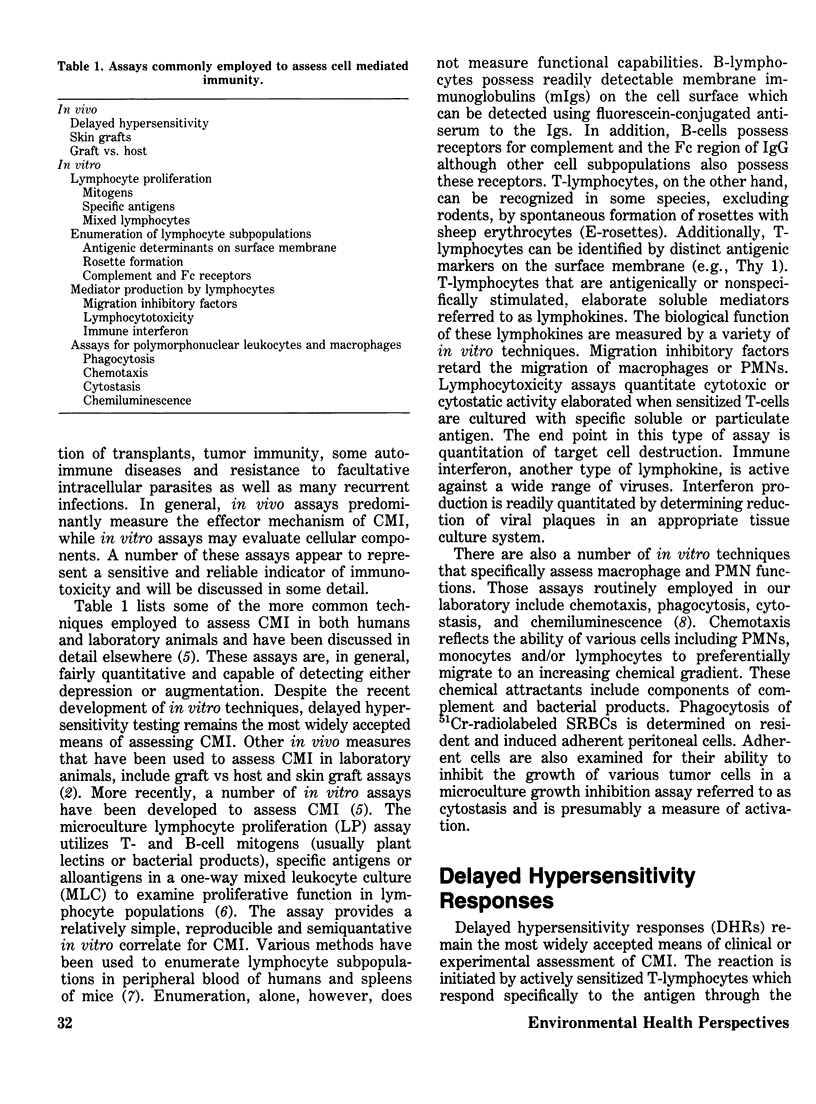
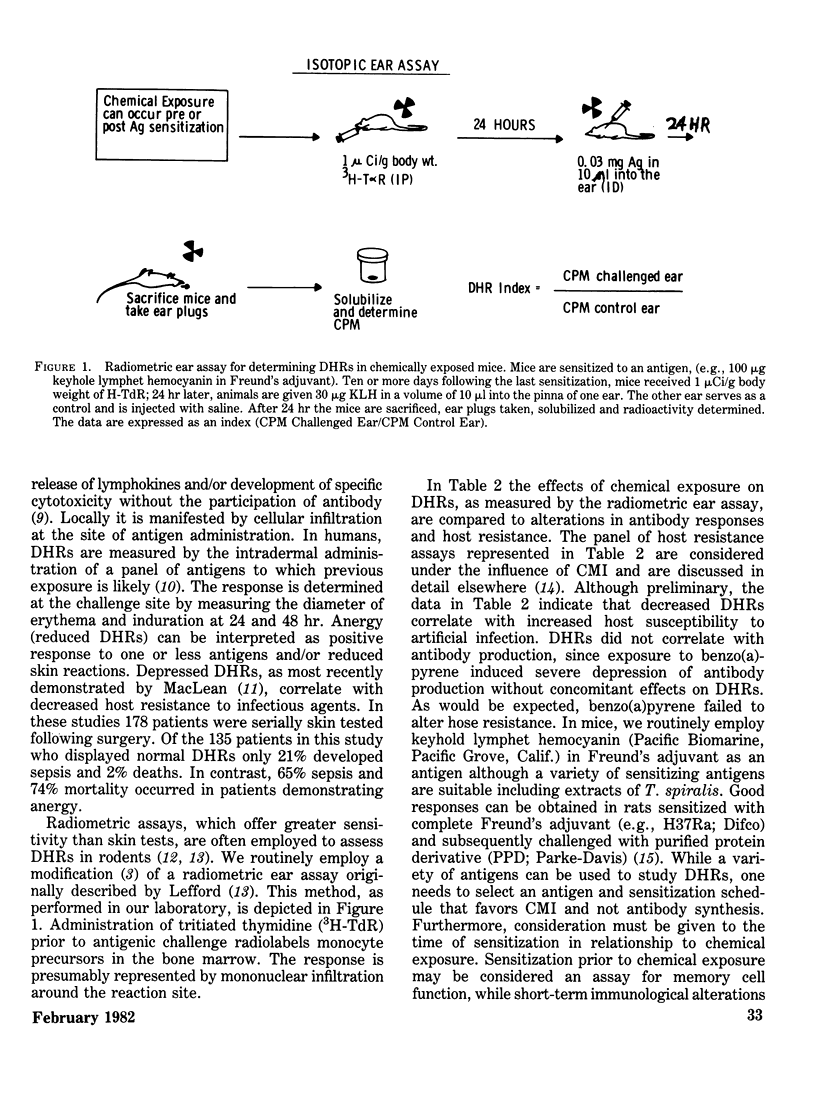
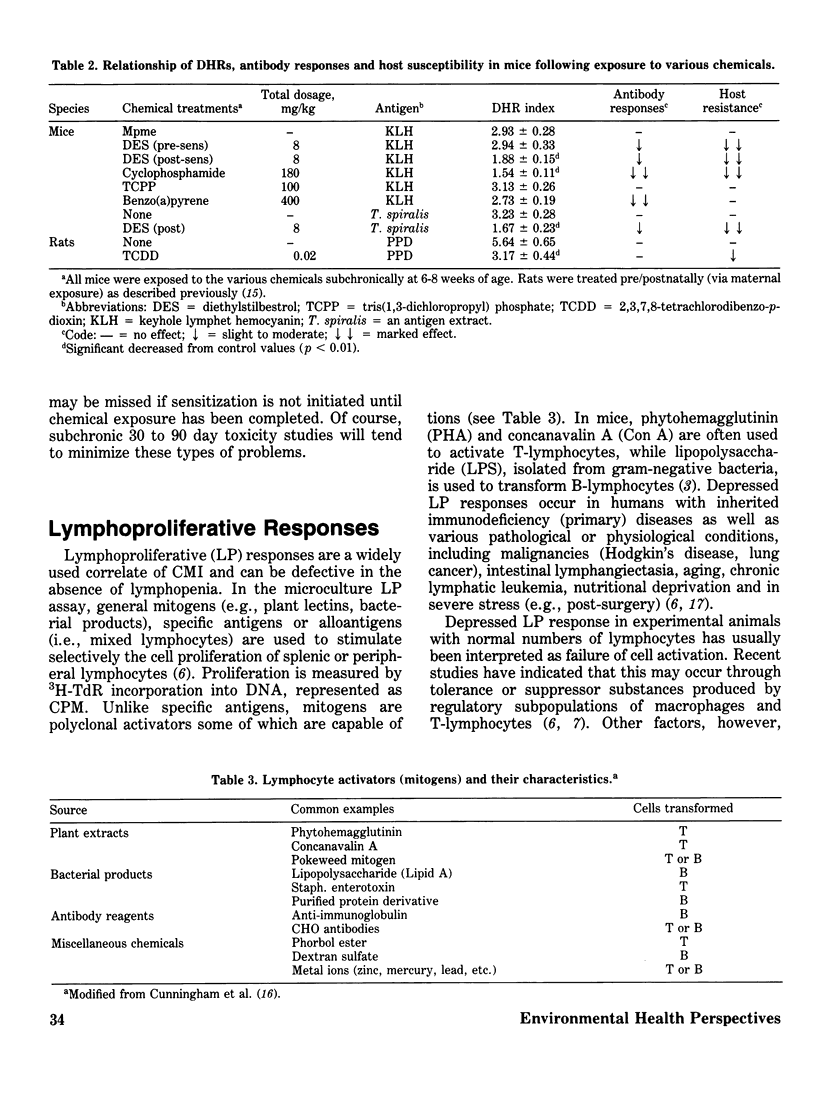
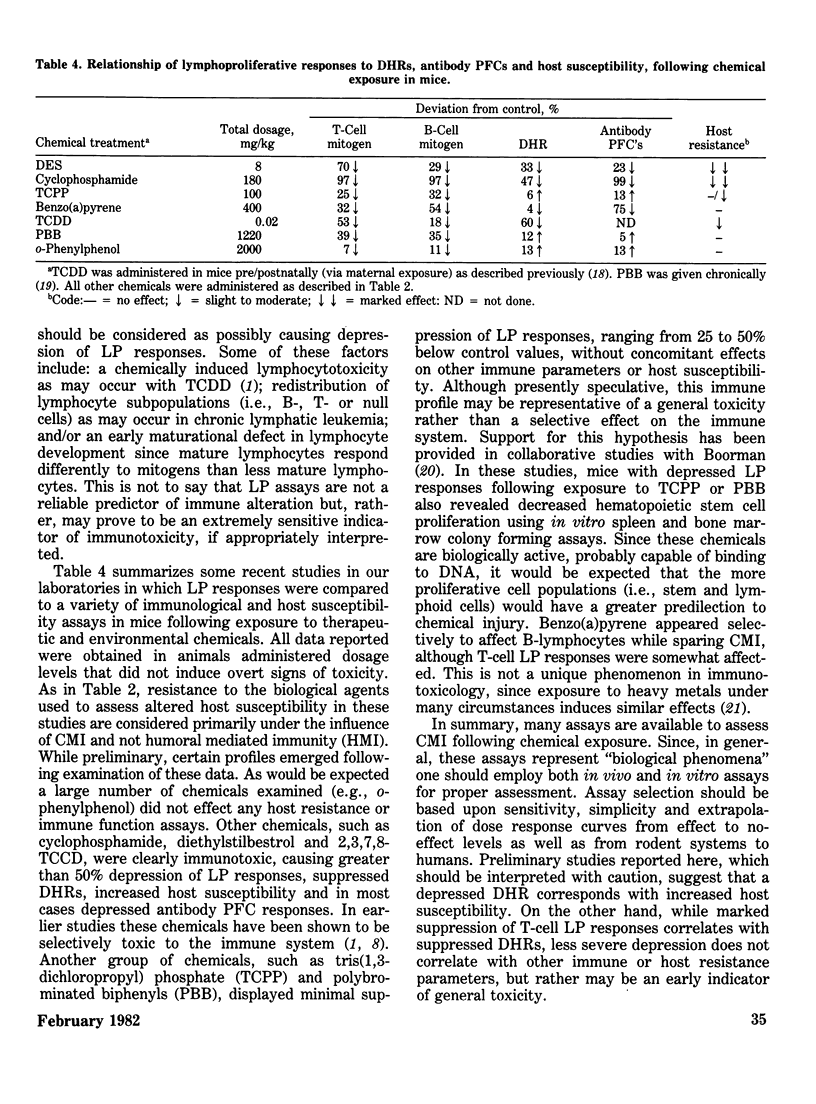
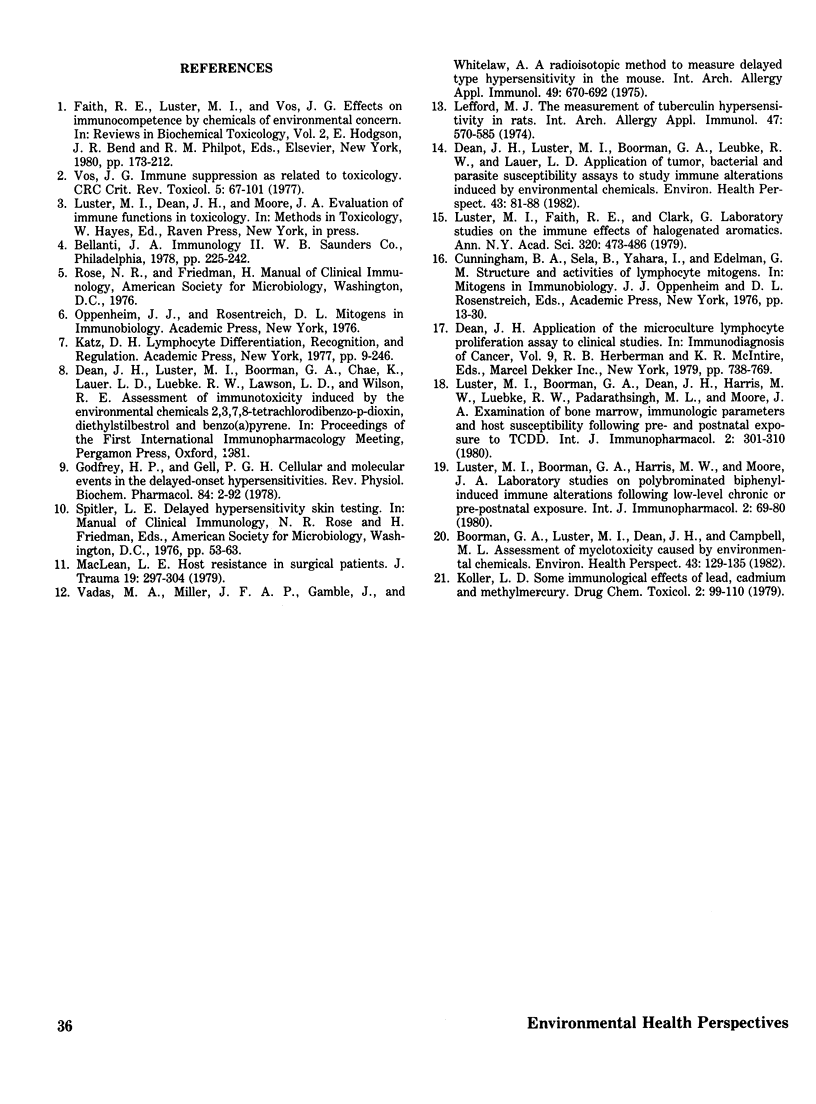
Selected References
These references are in PubMed. This may not be the complete list of references from this article.
- Boorman G. A., Luster M. I., Dean J. H., Campbell M. L. Assessment of myelotoxicity caused by environmental chemicals. Environ Health Perspect. 1982 Feb;43:129–135. doi: 10.1289/ehp.8243129. [DOI] [PMC free article] [PubMed] [Google Scholar]
- Dean J. H., Luster M. I., Boorman G. A., Leubke R. W., Lauer L. D. Application of tumor, bacterial and parasite susceptibility assays to study immune alterations induced by environmental chemicals. Environ Health Perspect. 1982 Feb;43:81–88. doi: 10.1289/ehp.824381. [DOI] [PMC free article] [PubMed] [Google Scholar]
- Godfrey H. P., Gell P. G. Cellular and molecular events in the delayed-onset hypersensitivities. Rev Physiol Biochem Pharmacol. 1978;84:1–92. doi: 10.1007/BFb0030490. [DOI] [PubMed] [Google Scholar]
- Koller L. D. Some immunological effects of lead, cadmium and methylmercury. Drug Chem Toxicol. 1979;2(1-2):99–110. doi: 10.3109/01480547908993184. [DOI] [PubMed] [Google Scholar]
- Lefford M. J. The measurement of tuberculin hypersensitivity in rats. Int Arch Allergy Appl Immunol. 1974;47(4):570–585. doi: 10.1159/000231251. [DOI] [PubMed] [Google Scholar]
- Luster M. I., Boorman G. A., Dean J. H., Harris M. W., Luebke R. W., Padarathsingh M. L., Moore J. A. Examination of bone marrow, immunologic parameters and host susceptibility following pre- and postnatal exposure to 2,3,7,8-tetrachlorodibenzo-p-dioxin (TCDD). Int J Immunopharmacol. 1980;2(4):301–310. doi: 10.1016/0192-0561(80)90030-2. [DOI] [PubMed] [Google Scholar]
- Luster M. I., Faith R. E., Clark G. Laboratory studies on the immune effects of halogenated aromatics. Ann N Y Acad Sci. 1979 May 31;320:473–486. doi: 10.1111/j.1749-6632.1979.tb56628.x. [DOI] [PubMed] [Google Scholar]
- MacLean L. D. Host resistance in surgical patients. J Trauma. 1979 May;19(5):297–304. doi: 10.1097/00005373-197905000-00001. [DOI] [PubMed] [Google Scholar]
- Vadas M. A., Miller J. F., Gamble J., Whitelaw A. A radioisotopic method to measure delayed type hypersensitivity in the mouse. I. Studies in sensitized and normal mice. Int Arch Allergy Appl Immunol. 1975;49(5):670–692. doi: 10.1159/000231449. [DOI] [PubMed] [Google Scholar]
- Vos J. G. Immune suppression as related to toxicology. CRC Crit Rev Toxicol. 1977 May;5(1):67–101. doi: 10.3109/10408447709101342. [DOI] [PubMed] [Google Scholar]


